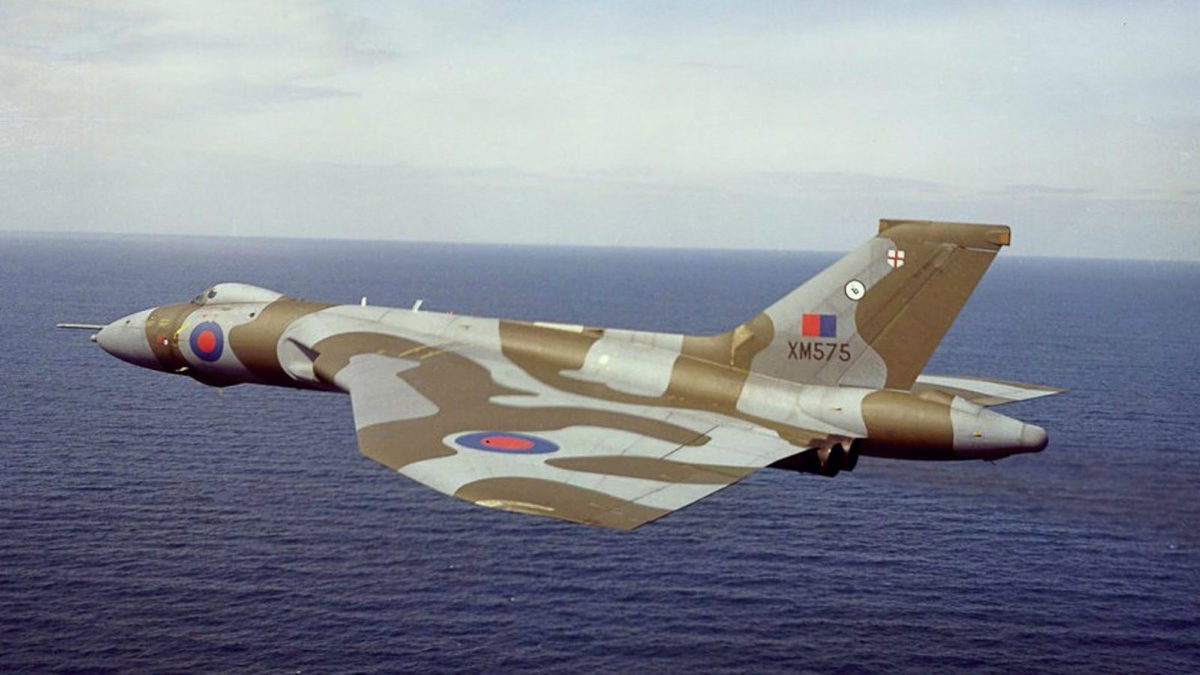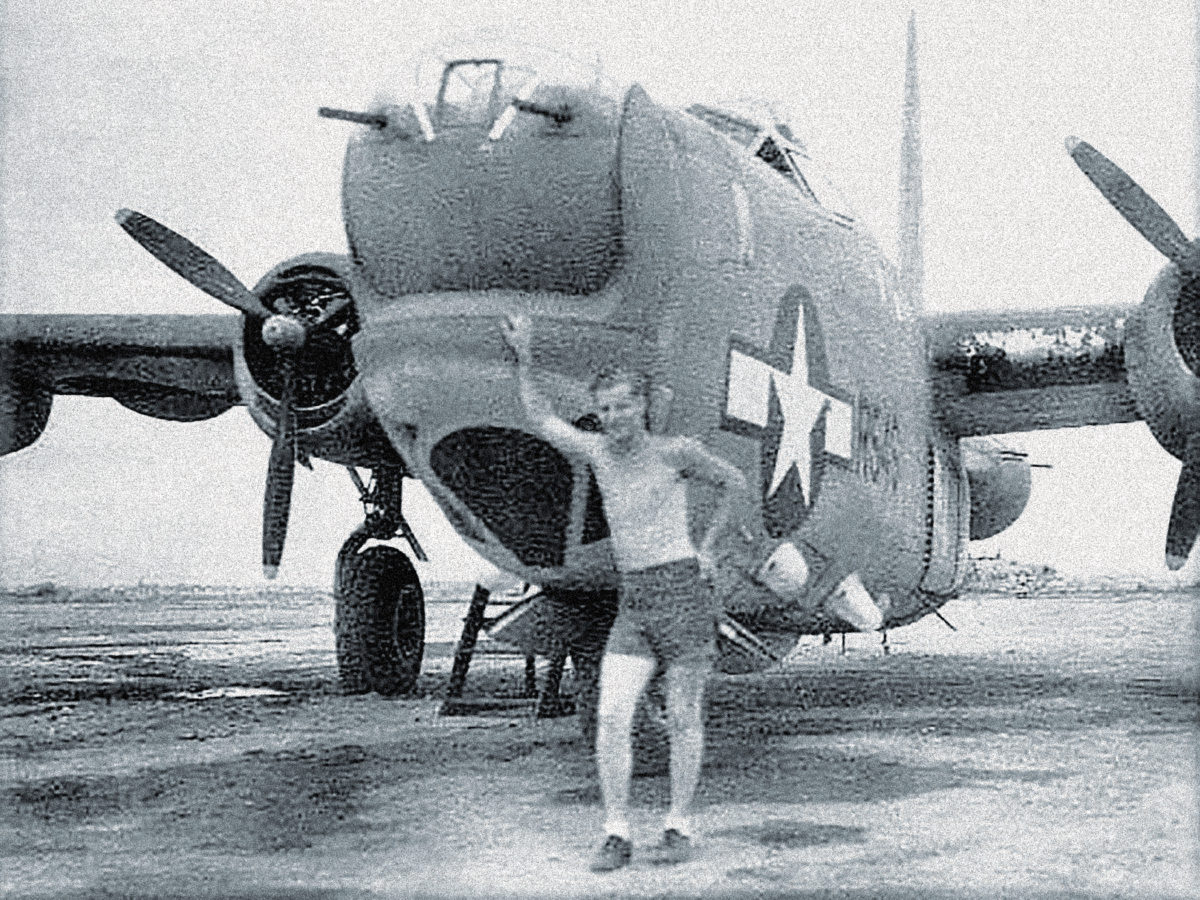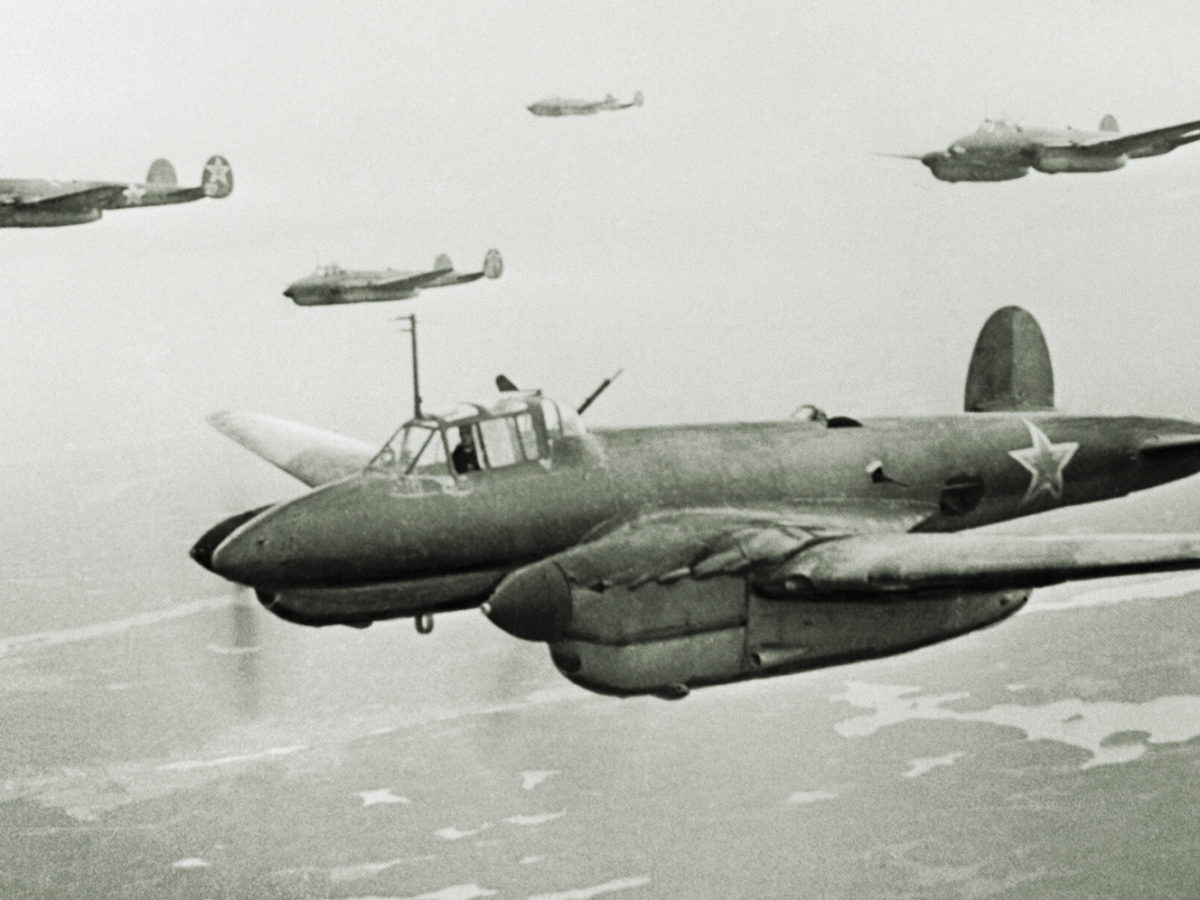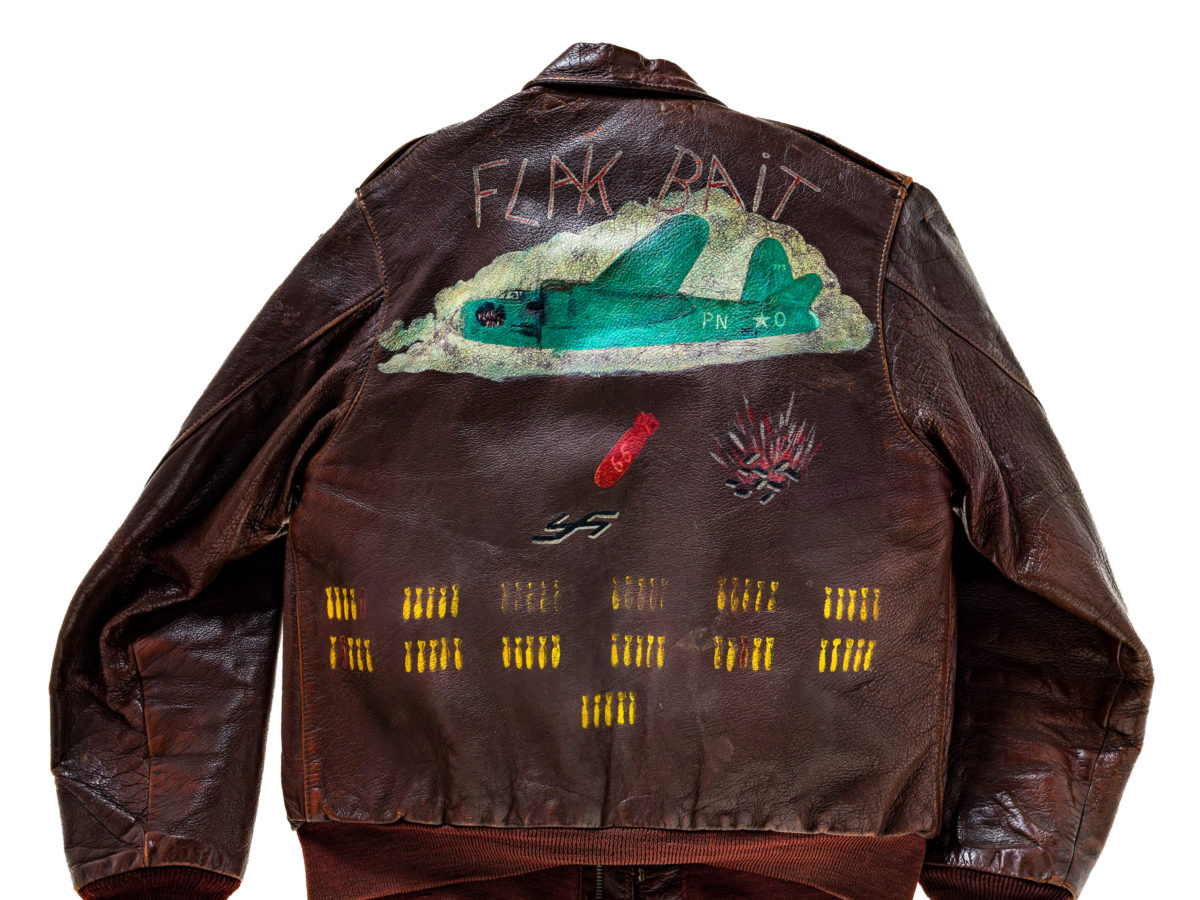The sleek, delta-wing bomber lands in the ocean, then slowly sinks to the bottom — part of a plan by a menacing villain intent on recovering the stolen aircraft’s nuclear weapons.
The premise of the 1965 James Bond film “Thunderball” might seem far-fetched, but the starring plane played a very real role in the Royal Air Force during its more than quarter-century of operational service. Perhaps the most remarkable thing about the Avro Vulcan, which was designed at the height of the Cold War as a nuclear deterrent, is that in the only conflict in which the “Tin Triangle” saw service, it carried conventional weapons.
Forging the Vulcan
In January 1947, the British Air Ministry took the first step toward developing the Vulcan when it directed the Ministry of Supply to issue specification B.35/46 for an aircraft weighing no more than 100,000 pounds and capable of carrying a 10,000-pound bombload for 3,350 nautical miles while cruising at 50,000 feet at 500 knots. Since the RAF’s primary bombers at the time were the piston-engine Avro Lancaster and its descendent, the Lincoln, that was a pretty tall order. Three of the seven companies that submitted proposals for the new bomber received the go-ahead to develop prototypes: Vickers, Handley Page and A.V. Roe (Avro).
Vickers’ Type 660 was viewed as an insurance program, since its design was much less radical than Handley Page’s or Avro’s proposals. Considering the state of large jet aircraft design and construction in the United Kingdom, that wasn’t a bad idea. The first flight by a Valiant, as the Vickers bomber was named, took place in 1951. It entered operational service in 1954, proving the worth of big jets to RAF bomber personnel.
GET HISTORY’S GREATEST TALES—RIGHT IN YOUR INBOX
Subscribe to our HistoryNet Now! newsletter for the best of the past, delivered every Monday and Thursday.
A Valiant dropped the first British-designed atomic bomb in a 1956 test. Valiants also saw action that same year as conventionally armed bombers during the Suez Crisis, striking Egyptian airfields. By 1960, however, the Valiant was largely obsolete as a bomber, though it served as a tanker until 1965.
The second competition entry, Handley Page’s HP.80 Victor, first flew in 1952. Featuring swept wings that incorporated four turbojet engines in the roots and a large T-tail configuration, the Victor had the largest payload capacity of any of the three designs. It was introduced to squadron service in 1956 and turned out to be a fine performer in its intended role: as a high-altitude bomber capable of carrying nuclear weapons.
POTENTIAL Threats
However, the Soviet Union’s increasingly effective air defense system, particularly its high-flying surface-to-air missile capability, forced a change in tactics so that 1960s aircrews would have a reasonable chance of hitting their targets. Instead of flying at high altitude, RAF bombers—like their American counterpart in Strategic Air Command, the Boeing B-52 — were switched to low-level, high-speed ingress routes. The theory was that if the Soviets couldn’t see the bombers on radar, then no matter how good the SAMs were, the bombers could get through.
Unfortunately, the Victor’s thin wing couldn’t take the sustained pounding inherent in flying fast and low. After several aircraft and crews were lost due to structural failures, Victors were converted to aerial tankers, a role they continued into the 1990s.
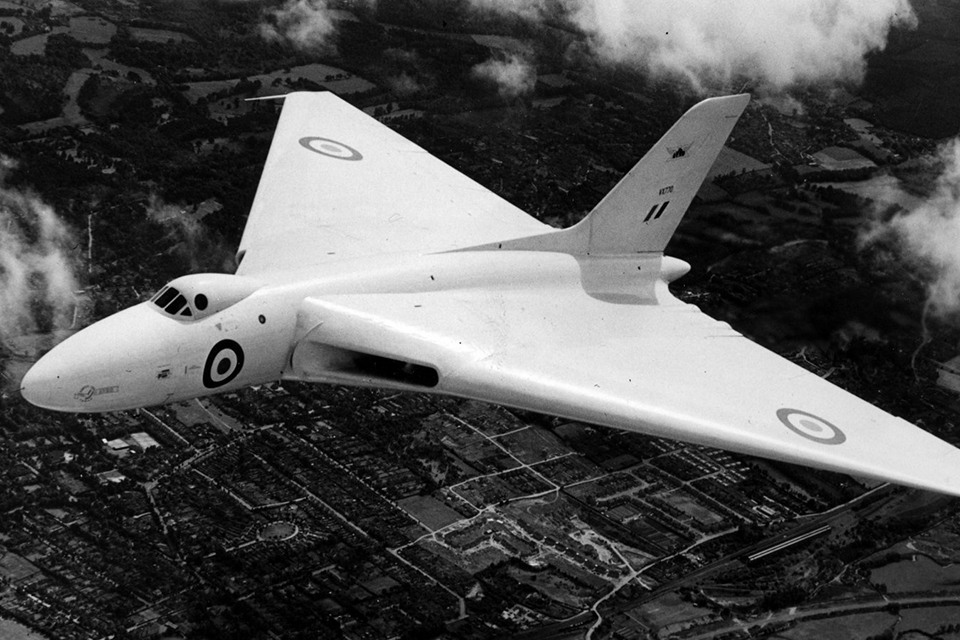
A.V. Roe and Company put forth the third and most radical of the jet bomber designs. Using newly acquired research from the Germans, Avro’s designers took an unusual approach. High-speed operations required a sweptwing design, but the desired specs for wing loading translated into a prohibitively long and structurally complex wing. The designers eventually hit upon the idea of increasing wing area by filling in the area between the trailing edge of the swept wings and the fuselage. This design soon became a flying wing, eliminating the need for a conventional tail. Control surfaces in the wing’s trailing edge, called elevons, served as both elevators and ailerons. Thus the Type 698 was born, soon to be christened the Vulcan.
Britain’s triumvirate of bombers came to be called the V-Force. It was the UK equivalent of America’s SAC while it operated. At its peak in 1962, the V-Force had 22 operational squadrons. A portion of each squadron, sometimes as many as four aircraft, sat on nuclear-armed alert at RAF bases, waiting for an order that no one wanted to hear.
Recommended for you
TESTING THE VULCAN
Given the Vulcan’s radical design, Avro opted to build several single-seat concept demonstrators, dubbed the Type 707, which used a single turbojet and as many off-the-shelf components as possible to reduce costs. For example, they used the nosewheel and cockpit canopy from the Gloster Meteor fighter. Completed in 1949, the first 707 flew well with no real vices save one: At high speeds, the wing’s straight leading edge caused an alarming vibration. Designers added a “kink” to the outboard third of the wing, curing the problem. The kink would also be used on the full-size production Vulcan.
As the 707 tests progressed, initial construction continued on the Vulcan prototype. The first one was rolled out in August 1952. Serial number VX770 was far from an operational bomber, but it did yeoman service as an aerodynamic demonstrator, flying low- and high-speed tests plus high-altitude and handling-quality checks. Initially fitted with one pilot’s seat, toward the end of the year this first Vulcan had a second pilot’s ejection seat crammed into it. The resulting extremely cramped flight deck would be a constant complaint of Vulcan crews.
Once they had wormed their way into their seats, the pilots used fighter-type joysticks to maneuver the surprisingly nimble aircraft. The throttles for the B.2 model’s four Rolls-Royce Olympus201 (later 301) turbojets were located on a pedestal between the two pilots. Despite the B.2’s huge wingspan of more than 100 feet, the Vulcan was often rolled at airshows, a guaranteed crowd-pleaser.
John Reeve, an RAF Vulcan pilot with many hours in the cockpit, recalled: “At high altitude, it was a delight to fly. She needed strange handling techniques—lots of rudder and very little aileron—but with a low wing loading she could outturn all the current UK fighters if you could determine when to turn by using our radar threat receivers.”
In the Vulcan as well as the other two V bombers, only the pilots’ positions were ever fitted with ejection seats. The remaining three Vulcan crew members, who sat about three feet behind the pilots’ seats facing aft, were supposed to bail out via the same nose hatch that they used to enter the bomber.
Looking aft from the nose, the leftmost crewman was the navigator-radar, who also served as the bombardier. He planned the target attack details and primary radar fix points, and took celestial shots when necessary for navigating. In the center sat the navigator-plotter, who worked in conjunction with the nav-radar to get the bomber to its target on time. On the right was the air electronics officer, or AEO, responsible for the Vulcan’s complex electrical system. The AEO also took on the role of electronic warfare officer as the Vulcan’s electronic countermeasures (ECM) suite was developed and improved throughout the jet’s career.
THE DOWNSIDES
Roy Brocklebank, a long-serving nav-radar, shared a “revealing” anecdote about the jet’s cramped interior: “To take a pee, the pilots had to unstrap from their parachute and ‘bang’ seat, fiddle around under g-pants, fish inside long johns and underwear and extract one’s equipment. Then, in a sitting position, open the chrome top of the pee-tube, and right next to the other pilot, let fly. After checking, of course, that the pee-tube was plugged in tightly at the base of the cockpit. For the rear crew, at least we could stand up.”
One problem all Vulcan crew members shared was atrocious visibility. The pilots had only narrow, sloping windows to the front that left them essentially blind for 30 yards directly ahead, in addition to a circular window on each side, configured so that unless they contorted themselves like a tortoise with its head forward, they couldn’t even see their own wingtips. The rear-facing crewmen had no view at all save that gained from a periscope the AEO could use to scan the jet’s underside. As Reeve said, “Flying the Vulcan has been compared to flying a post box by looking through the letter slit.”
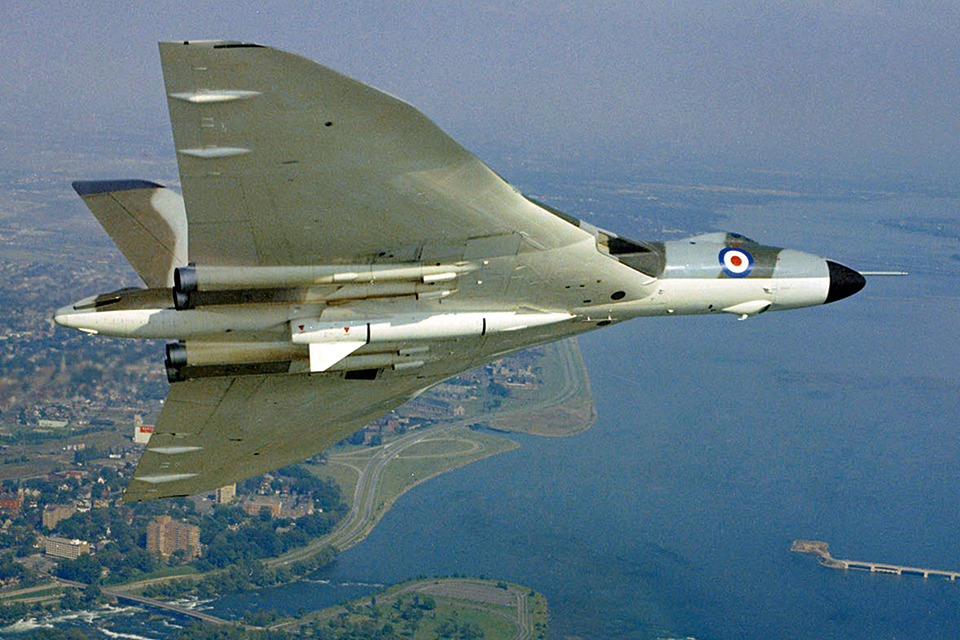
Flying High
When the aircraft was first envisioned, its 50,000-foot-plus ceiling was thought to be the perfect defense against Soviet interceptors. “The Vulcan was a superb aircraft and weapons system for the late 1950s and 1960s,” Reeve pointed out. “It could fly above the heights that Soviet aircraft could reach. We expected to be at about 54,000, and the MiG-19 stopped well before that. The addition of goodish ECM also helped, and what the kit lacked in subtlety — no range gates stealing for us [a method of tricking the search radar via subtle desensitizing of the radar’s receiver], just noise jamming — it made up for in sheer electrical power output. We could fry target radars.”
Confidence in the Vulcan’s invulnerability at high altitudes declined over time, however. The downing of CIA pilot Francis Gary Powers’ Lockheed U-2 by a Soviet SAM, from an altitude more than 20,000 feet higher than the Vulcan’s ceiling, came as a rude shock. RAF tacticians brought the Vulcan down from the stratosphere to the deck after that, and crew training changed accordingly.
Reeve remembered the transition: “We went low-level, which was fun, but the aircraft was never designed for this, and she was out of her element. Lots of basic things were now wrong, and there was never enough money to put them right.” For example, the lack of ejection seats for the rear crew was never remedied. The Martin-Baker Company developed a system that could have been retrofitted to the Vulcan, but the RAF decided against installing it, anticipating that the delta-wing bomber would be in service only a few more years. New bomber designs on the drawing board would correct the problem, so why bother? They never imagined that all those new projects would be canceled, leaving the Vulcan to soldier on alone.
When it came to handling the Tin Triangle down on the deck, Reeve said: “I first saw the inside of a Vulcan in 1969 when I joined 27 Squadron at RAF Scampton. They had just got rid of the Blue Steel standoff nuclear missile and reverted to the free-fall role with both nuclear and conventional weapons. Training consisted of about six trips a month, each about 4½ hours. We had a problem because we had to do about 25 hours a month to meet the NATO target for operational proficiency, but the aircraft suffered terribly from metal fatigue at low level—hardly surprising, as it had not been designed for this.
“As strong as the Vulcan’s delta wing was,” Reeve continued, “there were limits. As a result, we could only do about 30 minutes over land at low level, and low level for us was 500 feet. Even worse, being designed for high level, where the IAS [indicated airspeed] is low, the Vulcan had a low IAS limit, and we flew low level at 240 knots. Basic training aircraft with low-hours solo students would overtake us. For war we flew 375 knots with a one-off speed of 415 knots, which was the ‘guesstimated’ speed a Vulcan was doing when it broke up at an air display.
“We thus had to find another four hours of low-fatigue flying to meet the NATO requirement, so we spent the first three hours at 43,000 feet doing navigation practice. This was totally valueless for the pilots, and the navigators could have gotten better practice in the simulator. Add in some 30 minutes circuit pounding and 15 minutes taxi time, and you had a typical Vulcan sortie. But we met the NATO standard.”
the crew
Although the SAC crews spent a week at a time on alert, waiting for the klaxon to sound, RAF bomber crews did it a bit differently. Roy Brocklebank recalled that most of the RAF bomber squadrons had one crew on alert for each 24-hour period. His unit, No. 12 (B) Squadron, held a crew on alert for 48 hours from Monday through Thursday, and another crew drew a longer 72-hour alert from Friday through Sunday.
“During QRA [quick reaction alert],” Brocklebank remembered, “during the day we studied our wartime targets, or we might be preparing for an overseas deployment or a training sortie after release from alert. Or we might just be at the squadron waiting. We played hours upon hours of uckers, Risk or cards.
“Unlike SAC’s scramble from a cold start, where the alert crews could be unaware of an impending exercise, we didn’t launch the QRA crew unless it was an actual mission. Instead, we had constant exercise EDOM alerts [scrambling the crew to the jet without actually launching] about every 36 hours. If one had not been called during the previous crew’s time, we stayed ready because we knew it would happen during our shift.
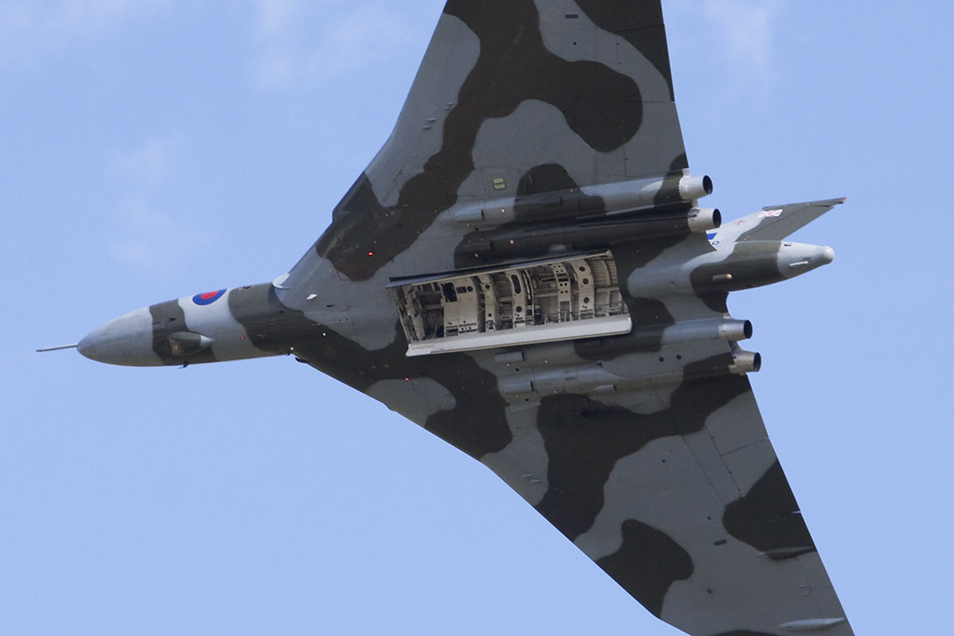
“For EDOMs, the crew was brought to varying states of readiness. We maintained a 15-minute state, which meant we were to be airborne within that time should the launch order be given. We could then be called to 05 [cockpit readiness], 02 [taxi to the runway] or start engines.
“We made it a point of professional pride to beat these times, and many incidents occurred as a result. The exercise would begin thusly over the tannoy, ‘Attention, attention, exercise EDOM,’ and that was usually all the crew ever heard because we would have run like hell to the staff car to get to the aircraft. The tower would fire a flare, which told us what the alert state was. Usually the pilot drove as we hurtled down the taxiway. One crew I was on opened the inside rear door, and the right-hand and center occupants leaned out, held by the left-hand occupant. The open door and displaced weight acted as an airbrake as the driver whirled the car through a 180 turn to head toward the aircraft at about 85 miles an hour.
“In the dispersal, it was slammed to a halt near, but usually not in, the assigned parking bay. The RAF police security guard simply let the crew through, no time for the SAC-style indoctrination identification protocol. The policeman then parked the car. One time the crew drove to its assigned parking bay, but the spot was already filled by a large fire extinguisher. Both car and extinguisher were write-offs, but we made the alert time.
“Even though we knew an alert would be called during our QRA, we still had to attend to ordinary functions like showering and the like. It was not that uncommon to see a naked copilot racing down the corridor, holding a flying suit and covered in soapsuds.
“Another incident occurred when our AEO’s wife was pregnant. He couldn’t sleep, so he left the caravan and went into the ops block to shower. Naturally, we got the alarm and reacted but couldn’t find the AEO. At the aircraft, we grabbed the startled crew chief and sat him in the AEO’s seat. If it had been an actual launch, he’d have gotten a crash course in wartime SOPs!”
Front Door
Another difference between America’s SAC bombers and the V-Force was their ingress routes. The majority of SAC’s aircraft were based in the continental United States and would fly over the North Pole on their way to Soviet targets. RAF crews instead would penetrate from the European side of the Soviet Union. Most of the V-Force planned to enter via Norway or Sweden, where the Soviet air defense system was considered weaker. As time went on, however, even this area became a crapshoot for survival.
“When I joined the V-Force in the 1960s,” Reeve said, “the red line on our charts was solid down the Baltic, but at least it was a thin line. The last look I had during the 1980s, it looked like somebody had had a nosebleed over the East German and Baltic coastlines. Whatever else the V-Force was, it was a marvelous economic weapon against the Soviet Union, because all of this was largely for our benefit; bombers coming from the U.S. would come over the Pole, not the Baltic.
“The first line of their defense would be elements of the Soviet fleet thrown forward in the Baltic to provide an early warning line. They would have to operate their radars to be of any use, and we hoped to detect their emissions and aim between the gaps. Of course, if they spotted us visually, there wasn’t much we could do during the day to prevent them seeing a large triangular aircraft trailing a long line of black smoke, so we hoped to fly by night. The main line of defense was at the coast, mainly their search and height-finding radars. Although we could try and jam them, we probably would have given ourselves away by our active transmissions, so we felt we had a better chance of getting through if we maintained EMCON [emission control].
“If a fighter did find us, we did have a chance of evading, but it was always a near thing. In practice against our own fighters, remember I couldn’t see him to judge the avoiding turn — I had to rely on my crew and our antique tail radar warning receiver and ECM gear to judge the turn. If it was daylight and he could see us, we would eventually be dead meat, but at night we might have gotten away with it.”
Both Reeve and Brocklebank related stories about simulated bomber-versus-fighter encounters in which Vulcan crews relied on ingenuity to defeat the hunter. Brocklebank recalled two such incidents: “We were flying out of RAF Akroteri [on Cyprus]. We were to go to low level and try to simulate an attack on the base, and the [English Electric] Lightnings were to stop us. We ran in at low level from the Cairo FIR [flight identification region] and heard a threat call being made to the patrolling fighter on the intercept frequency. We turned. The target turned according to the GCI [ground controlled intercept] controller. He had spotted us on his radar and was directing the fighter on to us.
“The intercept patter continued until we assessed the fighter had to be close-ish. Then our AEO transmitted, ‘Judy, Judy’ [a call from a fighter to a GCI controller that means ‘I’ve got it’]. Naturally, the controller is expecting this call, so he shuts up. The fighter jock would normally make the call, and he was not expecting it. In the confusion, we pressed in. By the time they’d sorted themselves out, the fighter was bingo fuel and had to either land or face a ditching.
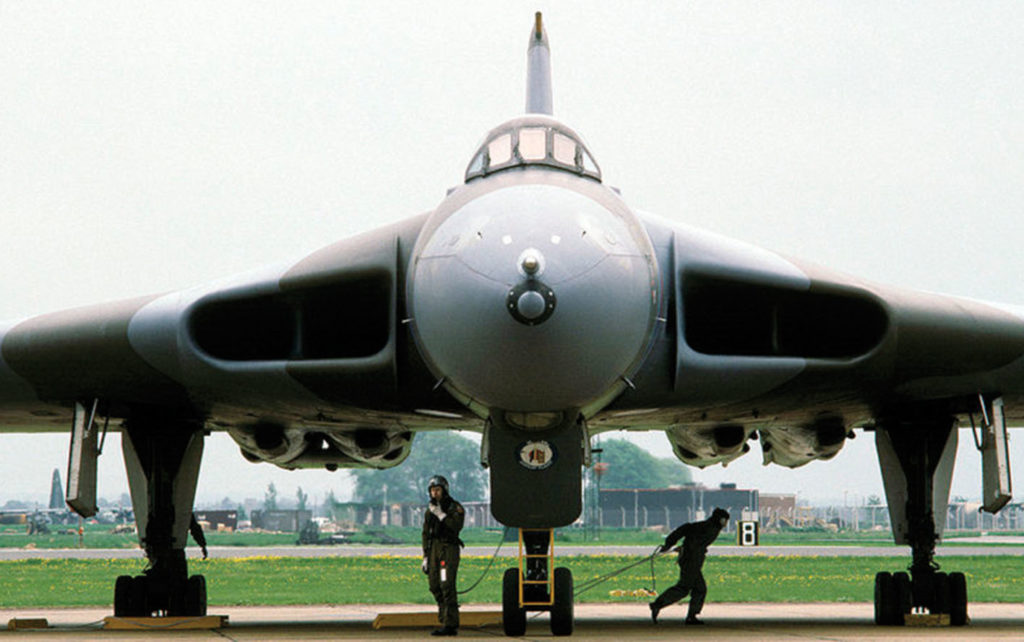
“On another flight, again in the Mediterranean, we were caught between two Fleet Air Arm Sea Vixen fighters. They had us sandwiched between them on radar and would take turns closing in, for as we approached one, the other would fly closer to our tail. If we turned into the second chap, the first would close. It was only a matter of time until they were close enough to employ [simulated] weapons at us. Fortunately for us, their R/T was crap. Instead of call signs, they used each other’s first names. As we weaved towards them, they casually swapped eyeball and shooter roles back and forth.
“At the critical moment, the AEO transmitted in a lazy drawl, ‘No, Claude, I’ve got it.’ We weaved merrily on our way while the Sea Vixens each broke off, thinking the other was administering the coup de grâce.”
‘He Never got Close’
Reeve admitted that in daylight the Vulcan’s size and smoky engines made it vulnerable, but he recalled one night training sortie against a McDonnell Douglas F-4 where the Vulcan gave a modern fighter the slip: “During 40 minutes, he never got close. We probably weighed about 130,000 pounds, but our Olympus engines had some 80,000 pounds of thrust, and many fighters of the day couldn’t boast that kind of power-to-weight ratio. Starting at 1,000 feet at 375 knots, I could be at 20,000 feet in less than one minute — admittedly trading speed for altitude. I’d only be at 200 knots, but the fighter could just not follow us on his radar. We did this three times, and he never got a lock on us.”
Throughout the Vulcan’s career, it was always supposed to be replaced by something better and newer. It never was. Fortunately, it also was never called upon to carry out its doomsday mission, but it did see combat long after its designers would have consigned it to a museum.
The Falkland islands war
In April 1982, Argentina invaded the remote Falkland Islands, an Overseas Territory of the United Kingdom lying some 300 miles off Argentina’s coast. Britain dispatched an amphibious task force nearly 8,000 miles to retake the isles. As part of their military campaign, the British launched several conventional bombing missions, code-named “Black Buck,” from Ascension Island, the nearest British territory that was suitable for Vulcan operations.
In a series of attacks — as much a political statement as a militarily significant move — the Black Buck raids struck radar and communication sites as well as the Port Stanley airfield, where the Argentine air force based some of its fixed-wing ground attack aircraft. The extremely long-distance raids required 11 Victor tankers to refuel just one Vulcan bomber, but given that it was an eight-hour flight to the Falklands, this complex plan was the only option. Thanks to brave and ingenious crews, the nearly 8,000-mile round-trip raids were successful, and no aircraft were lost. More important, the damage one Vulcan inflicted in the middle of Port Stanley’s runway forced Argentine jets to attack the British task force from bases on the mainland, with the consequent disadvantages of operating at maximum range.
Even before the Falklands conflict, the Vulcan and Britain’s airborne nuclear arsenal were being phased out in favor of nuclear-armed submarines. The Vulcan entered its last phase of service when it was converted to the K.2 tanker. But even this role lasted barely two years. The last operational Vulcan squadron was disbanded in 1984.
An RAF display team flew the last Vulcan in service, XH558, until 1993, when it was sold to C. Walton Ltd., a private family firm that purchased the aircraft in hopes it would one day be returned to flying status. With the help of the Vulcan to the Sky Trust, after 14 years and an expenditure of more than £7 million, XH558 took to the air once again on October 18, 2007. Today the last surviving Vulcan still thrills crowds at airshows throughout Great Britain.
Retired U.S. Air Force Lt. Col. Braxton “Brick” Eisel is the author of numerous aviation articles as well as the books 417th Night Fighter Squadron in World War II and Magnum! The Wild Weasels in Desert Storm. Further reading: Avro Vulcan, by Robert Jackson; The Vulcan B.Mk2 From a Different Angle, by Craig Bulman; and Vulcan Units of the Cold War, by Andrew Brookes. For more on the last flying Vulcan, see vulcantothesky.org
Time to build your own Vulcan? Click here!
Originally published in the November 2009 issue of Aviation History. To subscribe, click here.
historynet magazines
Our 9 best-selling history titles feature in-depth storytelling and iconic imagery to engage and inform on the people, the wars, and the events that shaped America and the world.


